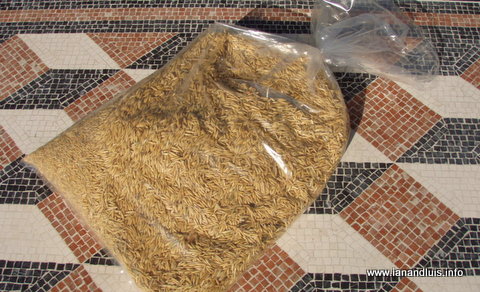Every season brings with it the need to keep on top of work in and around the garden. Autumn is especially busy for us. Surrounded by mature trees, we have many fallen leaves to collect which provide us with leaf mold for the following year. The colours of autumn are especially vivid this year prompted by an extended warm and dry period followed by cooler and damper weather.
Our main working area in the garden is down by the potting shed. When we first came here we built a partition hedge/fence around it made out of coppiced twigs, branches and logs: an idea we saw first used at Worsborough Reservoir in Barnsley, UK. This has worked well for us and has not only provided a natural looking compound around the working area but also a haven for wildlife including slow worms, beetles, lizards, birds, amphibians, mice and many moths and other insects which are so important in maintaning the natural balance in and around our vegetable beds and small orchard. We call this creation a fedge for want of a better word.
The fedge has served us well and each year we add more and more surplus branches and used bean poles and such which over time rot down and provide a valuable habitat - a functional and manicured wood pile. From time to time we have repaired it with new supports cut from coppiced hazel and last year we added discreet iron bars to help hold its shape and substance.
This year we will have a lot of coppiced hazel to add to the fedge so we decided to purchase some treated posts which will increase the height of the fedge and enable us to add a lot more material.
At the same time of renovating the fedge we decided that the leaf bin needed replacing as it had begun to rot and break apart. Fortunately we had a few pallets in stock from recent building work so with a bit of tweaking, a few nails and a staple gun we were able to produce a replacement leaf bin which is much stronger, slightly bigger and that will last us a good few years. We will need to think about replacing the compost bins next year and we still need to re-treat the shed with preservative but for now, the working area is once again fully functional and will serve us well in the coming weeks as the autumnal garden jobs are tackled.
Our main working area in the garden is down by the potting shed. When we first came here we built a partition hedge/fence around it made out of coppiced twigs, branches and logs: an idea we saw first used at Worsborough Reservoir in Barnsley, UK. This has worked well for us and has not only provided a natural looking compound around the working area but also a haven for wildlife including slow worms, beetles, lizards, birds, amphibians, mice and many moths and other insects which are so important in maintaning the natural balance in and around our vegetable beds and small orchard. We call this creation a fedge for want of a better word.
The fedge has served us well and each year we add more and more surplus branches and used bean poles and such which over time rot down and provide a valuable habitat - a functional and manicured wood pile. From time to time we have repaired it with new supports cut from coppiced hazel and last year we added discreet iron bars to help hold its shape and substance.
This year we will have a lot of coppiced hazel to add to the fedge so we decided to purchase some treated posts which will increase the height of the fedge and enable us to add a lot more material.
At the same time of renovating the fedge we decided that the leaf bin needed replacing as it had begun to rot and break apart. Fortunately we had a few pallets in stock from recent building work so with a bit of tweaking, a few nails and a staple gun we were able to produce a replacement leaf bin which is much stronger, slightly bigger and that will last us a good few years. We will need to think about replacing the compost bins next year and we still need to re-treat the shed with preservative but for now, the working area is once again fully functional and will serve us well in the coming weeks as the autumnal garden jobs are tackled.
More creatures from our garden can be found on Smaller Tales from Toriello
































